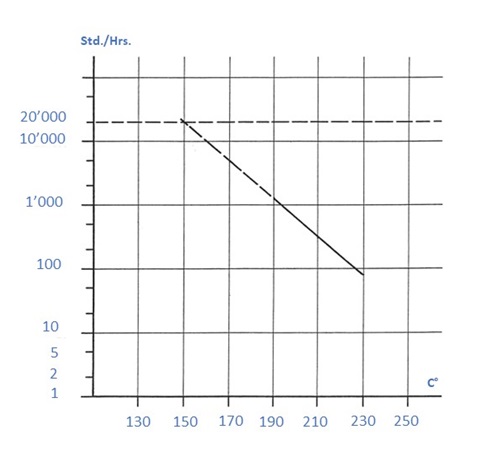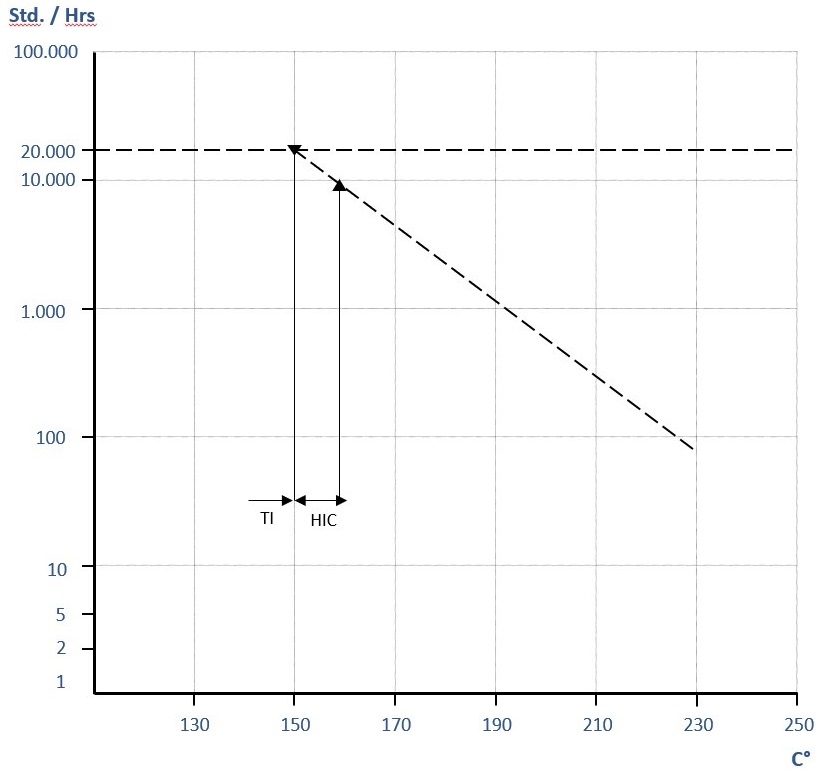The thermal capabilities of electrical insulating material are often measured referring to the standards IEC 60216-1 and IEC 60216-2.
The standards explain how to determine the temperature index (TI), that is the temperature at which a chosen parameter reaches a critical value, after 20.000 hours lifetime.
In case of elastomers like polyolefins the norm IEC 60216-2 recommends to choose the elongation at break as a parameter to determine the end-of-life.
When this parameter fells below 50%, it is assumed that the elastomer has lost its insulation properties.
This can be considered a conservative method, mainly in the applications where the material in no subject to elongation, once it is installed.

The determination of the temperature index of an insulation material is based on the measurement of its elongation at break at various ageing temperatures and on extrapolation towards 20.000 hours.
It is assumed that a practically linear relationship exists between the logarithm of the time that is necessary to cause the drop of the elongation at break to 50% and the corresponding absolute temperature (Arrhenius relationship).

The Arrhenius relationship also allows to determine the halving interval HIC, that is the temperature interval necessary to double (in case of decrease) of halve (in case of increase) the expected life-time.
This value is normally considered to be 10°C for insulation materials. So, a decrease of 10 °C in the working temperature doubles the life, whereas an increase of 10°C halves it. However the linear relationship is no longer valid with high temperatures close to transition points like glass transition temperatures or melting.

The determination of the temperature index (TI) allows to compare the performance of different wires. Tests made by Huber + Suhner have evidenced the better characteristics of RADOX wires, compared to major competitors. The result of these tests can be discussed with the users upon request.


